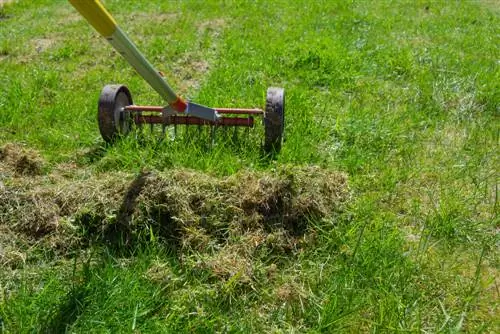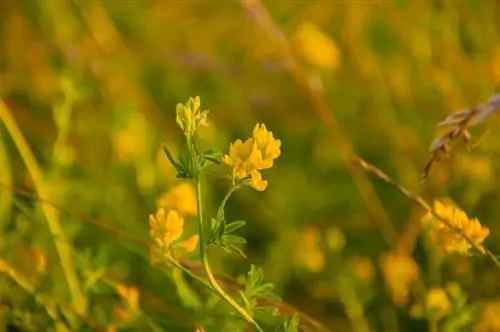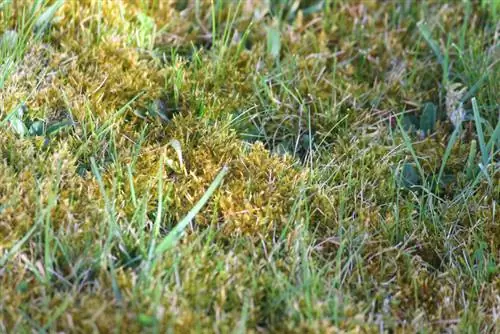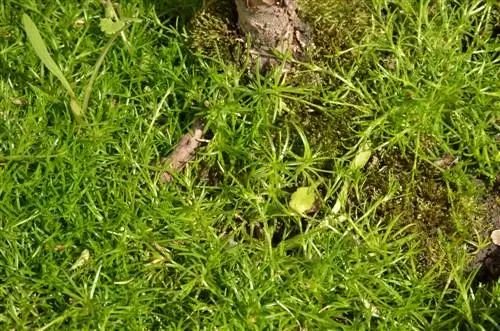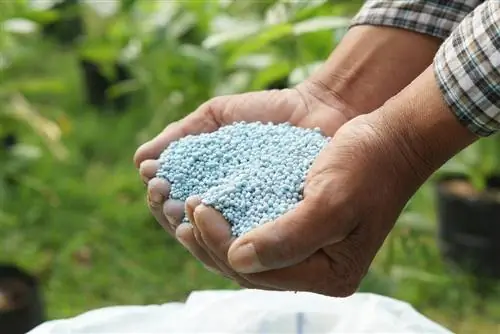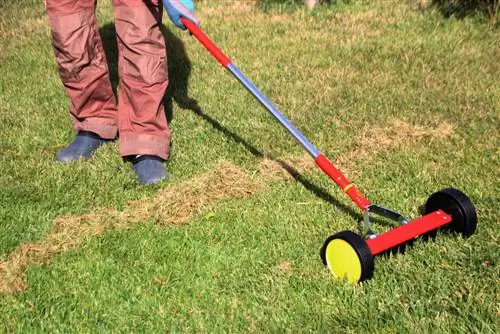- Author admin [email protected].
- Public 2023-12-16 16:46.
- Last modified 2025-01-23 11:21.
In spring the time for gardening begins with digging, planting, sowing and lawn care. Often this is just mowed. Further care is only considered if the lawn is not growing well or is riddled with moss.
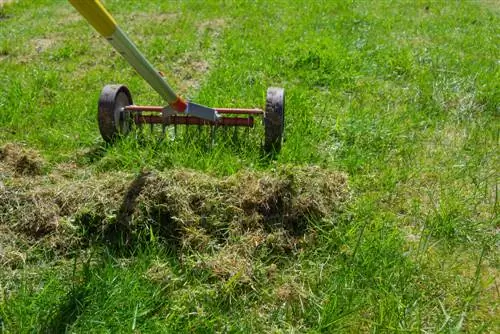
How do I take care of the lawn against moss in spring?
To effectively combat moss in the lawn in spring, you should test the pH value, lime if necessary, scarify the lawn, use nitrogen-containing fertilizer and do not mow the lawn too short. This creates a soil environment that is favorable for grasses and unfavorable for moss.
Does the lawn need to be scarified?
Dethatching is always necessary when a so-called thatch has formed or moss grows instead of grass. The scarifier scratches the turf a little and brings oxygen into the soil. The lawn can then grow thicker and become durable again.
Should I fertilize my lawn?
A little nitrogen-containing fertilizer (€52.00 on Amazon) ensures that the lawn grasses grow well. Sulfuric acid ammonia is quite suitable for this. Since it makes the soil slightly acidic, you should test the pH value beforehand.
If the measured pH value is below 6, applying lime is recommended. Two to three weeks later, fertilize the lawn with ammonium sulfate fertilizer. Alternatively, you can also use horn meal, but this takes a significantly longer time until it is absorbed by the grass.
How do I reliably remove moss from the lawn?
If a lot of moss grows in your lawn, you will need a lot of patience to remove it. But it will probably appear again and again. Scarifying often loosens and/or pulls out a lot of moss. Lawn fertilizer creates a soil environment in which moss does not feel particularly comfortable. You should stay away from some home remedies, such as s alt and vinegar.
When should I reseed the lawn?
If your lawn has more or less large bare spots, reseeding is recommended. This is the case, for example, after large areas of moss have been removed. Be sure to use high-quality seeds, even if they grow more slowly. It mainly contains dense-rooted grasses that reduce the re-emergence of moss or clover.
The most important things in brief:
- Test pH value in lawn soil
- lime the lawn if necessary
- If necessary, scarify the lawn
- apply nitrogen-containing fertilizer
- Don’t mow the lawn too short
Tip
Using lime you can influence the pH value in the lawn soil so that it can then be treated with ammonium sulfate fertilizer.

